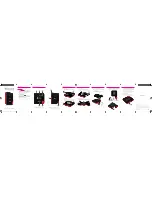
Advanced Settings
72
N150 4-Port Wireless Router JNR1010
2.
Your router receives the request message and looks in its rules table for any rules covering
the disposition of incoming port 80 traffic. Your port forwarding rule specifies that incoming
port 80 traffic should be forwarded to local IP address 192.168.1.123. Therefore, your router
modifies the destination information in the request message.
The destination address is replaced with 192.168.1.123.
Your router then sends this request message to your local network.
3.
Your web server at 192.168.1.123 receives the request and composes a return message
with the requested web page data. Your web server then sends this reply message to your
router.
4.
Your router performs NAT on the source IP address, and sends this request message
through the Internet to the remote computer, which displays the web page from
www.example.com.
To configure port forwarding, you need to know which inbound ports the application needs.
You can usually determine this information by contacting the publisher of the application or
the relevant user groups and newsgroups.
How Port Forwarding Differs from Port Triggering
The following points summarize the differences between port forwarding and port triggering:
•
Port triggering can be used by any computer on your network, although only one
computer can use it at a time.
•
Port forwarding is configured for a single computer on your network.
•
Port triggering requires that you know the computer’s IP address in advance. The IP
address is captured automatically.
•
Port forwarding requires that you specify the computer’s IP address during configuration,
and the IP address can never change.
•
Port triggering requires specific outbound traffic to open the inbound ports, and the
triggered ports are closed after a period of no activity.
•
Port forwarding is always active and does not need to be triggered.















































